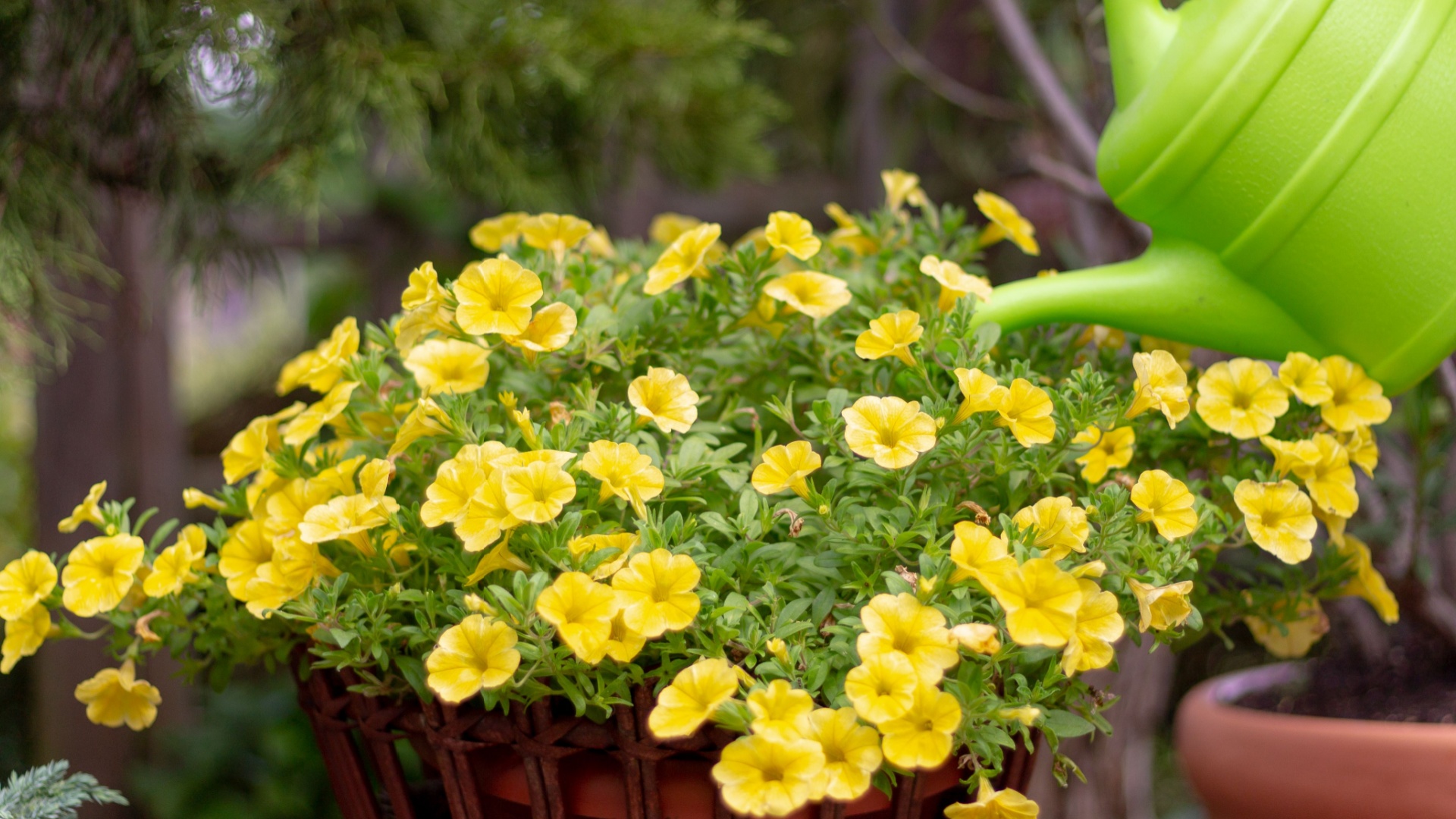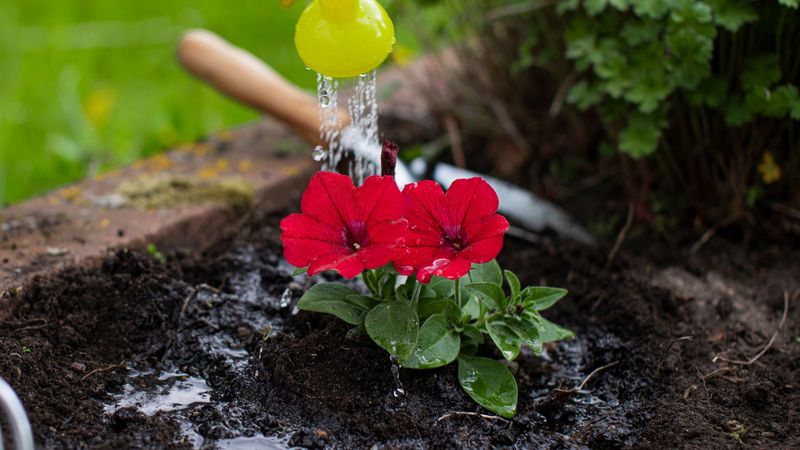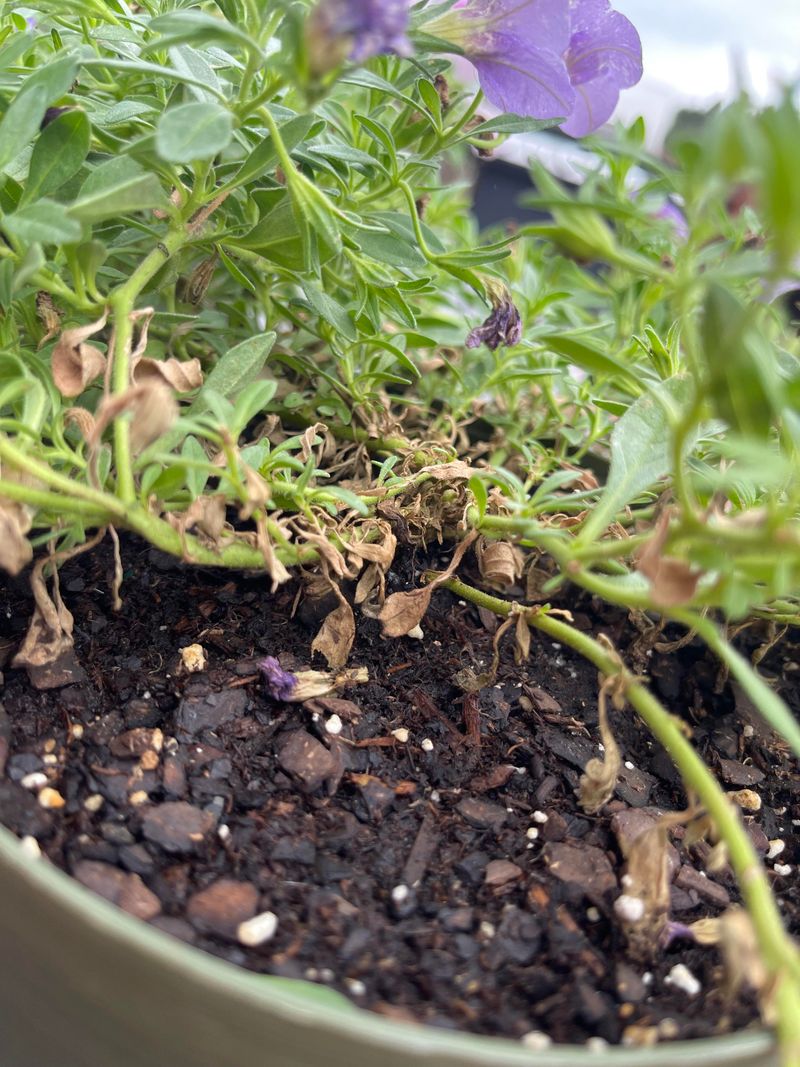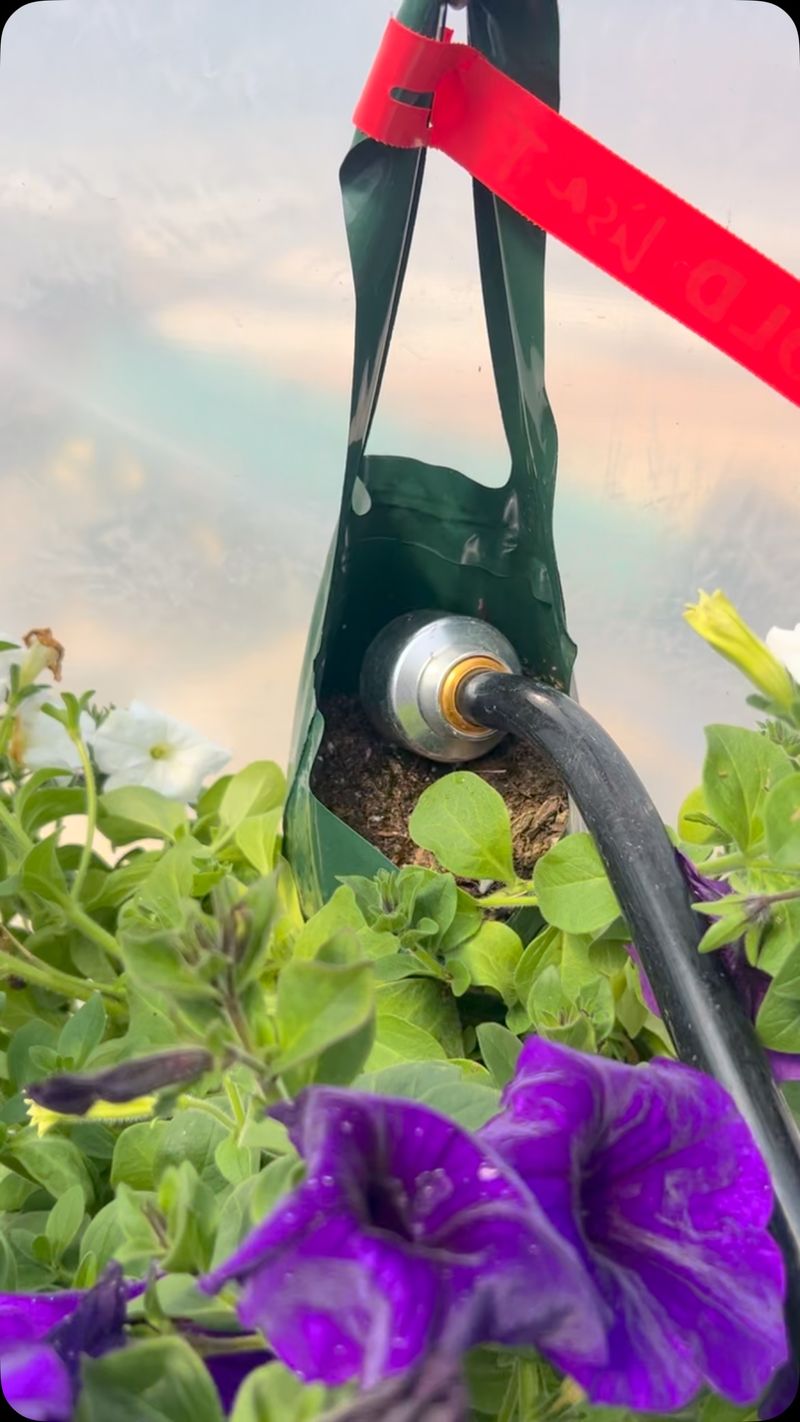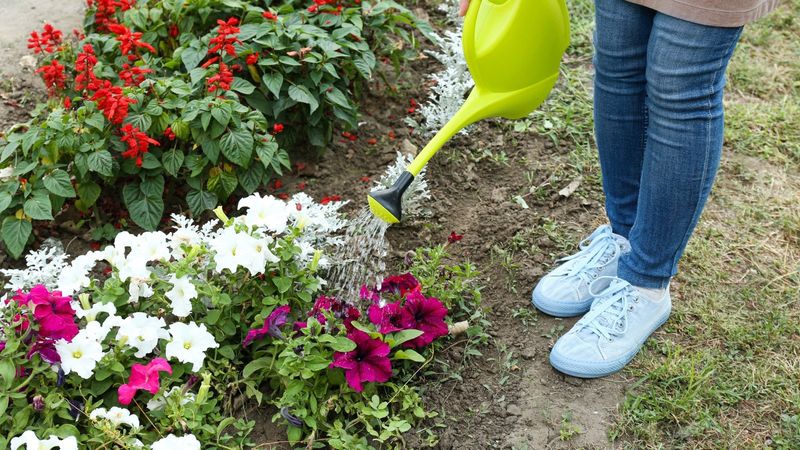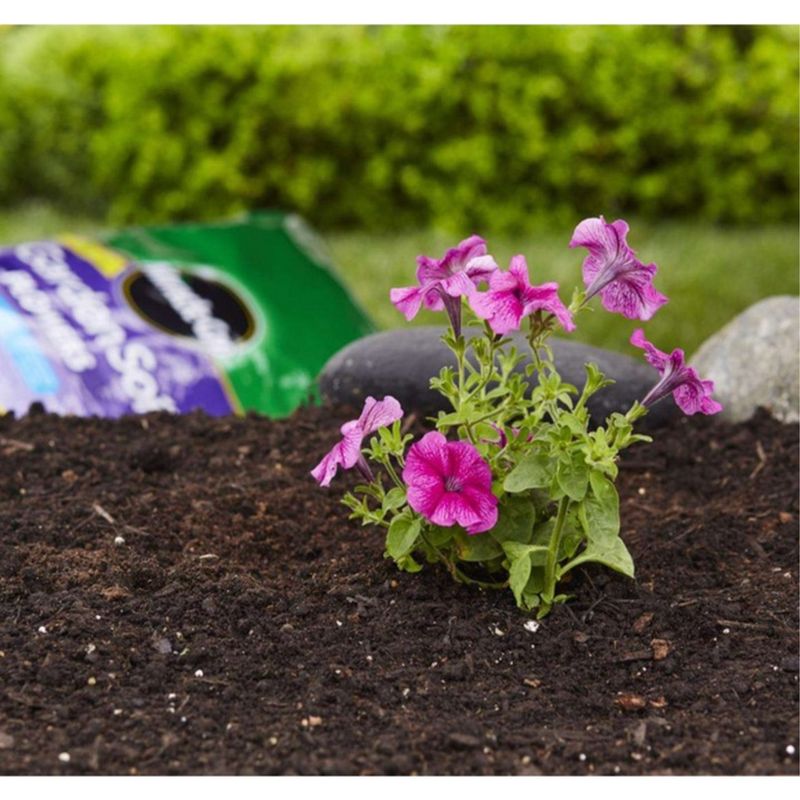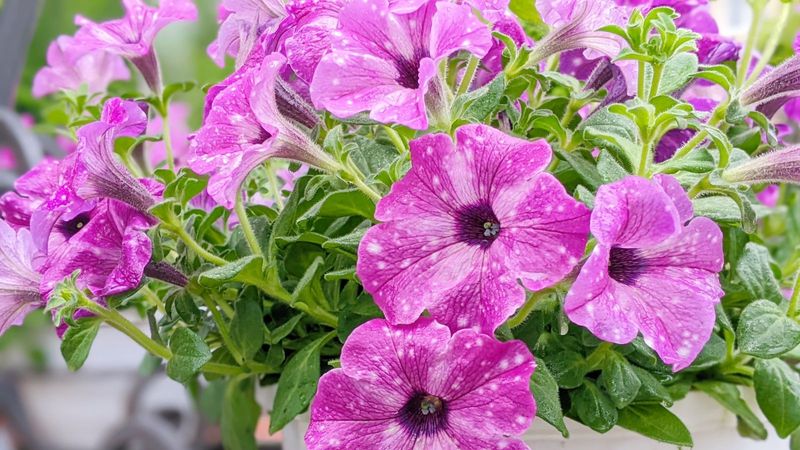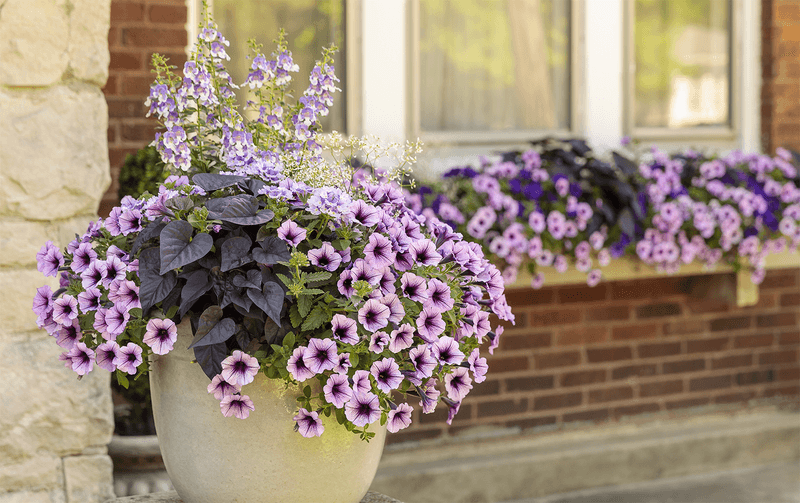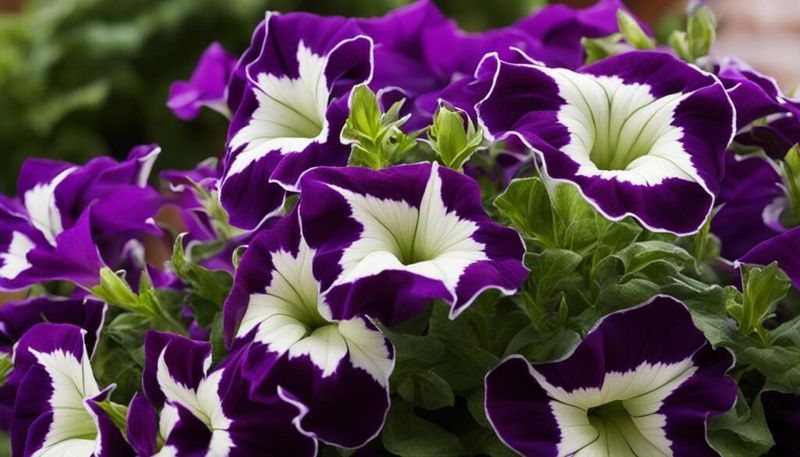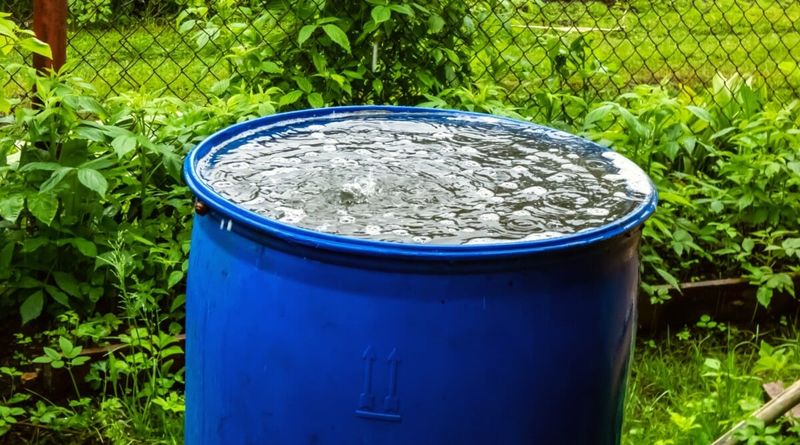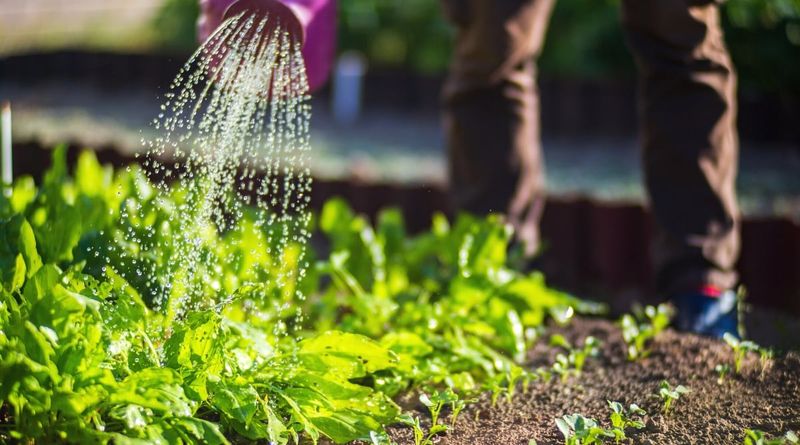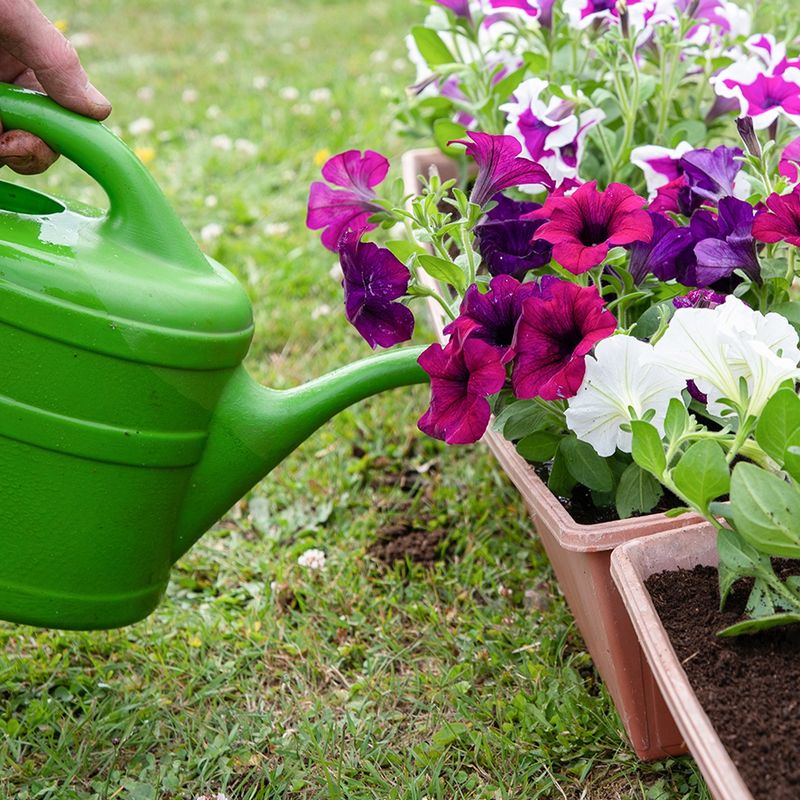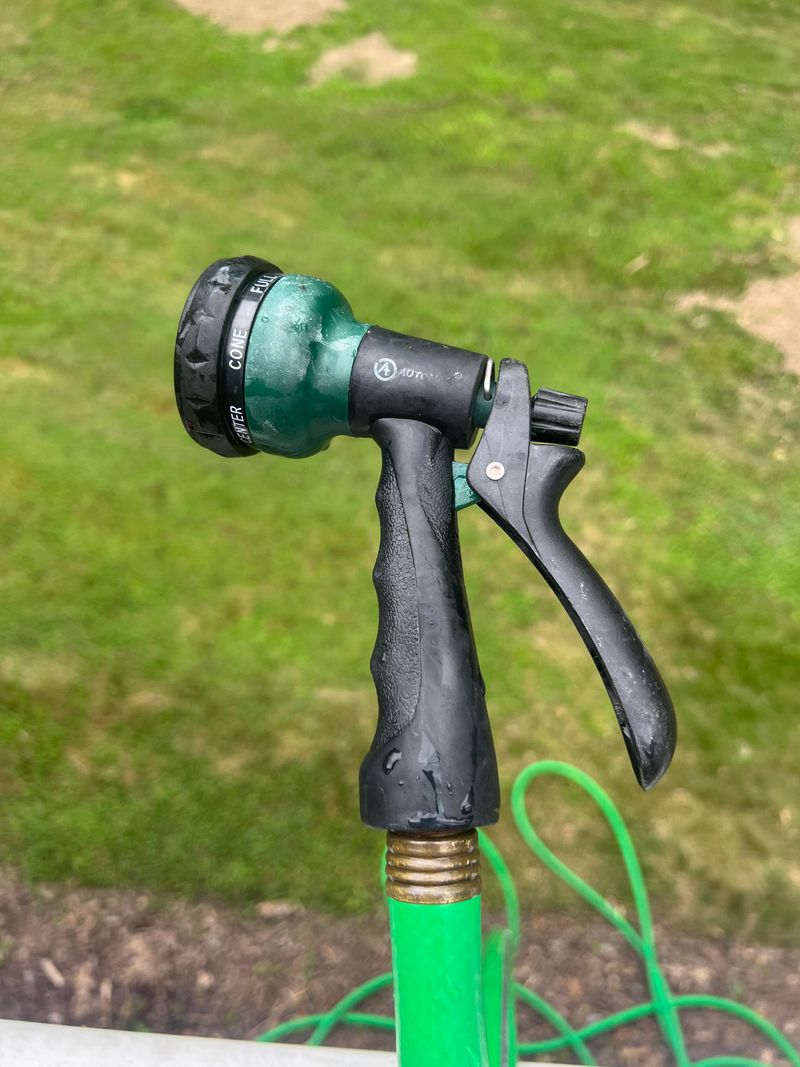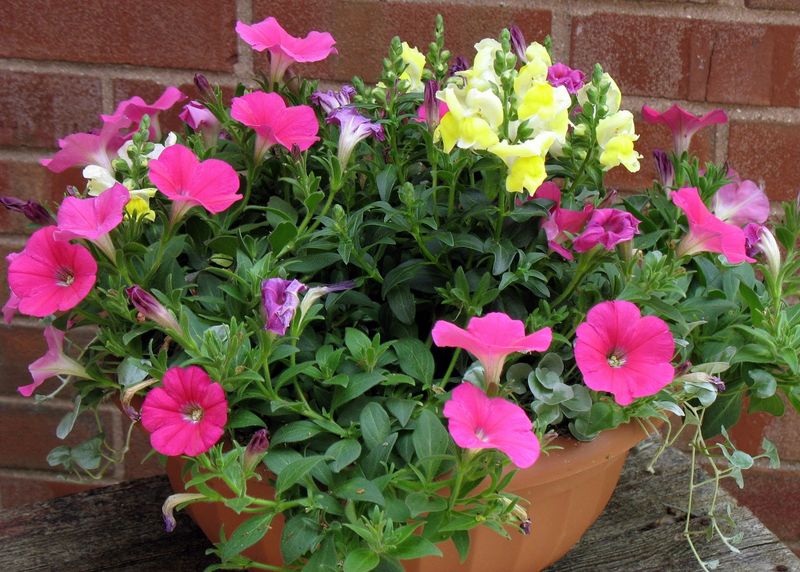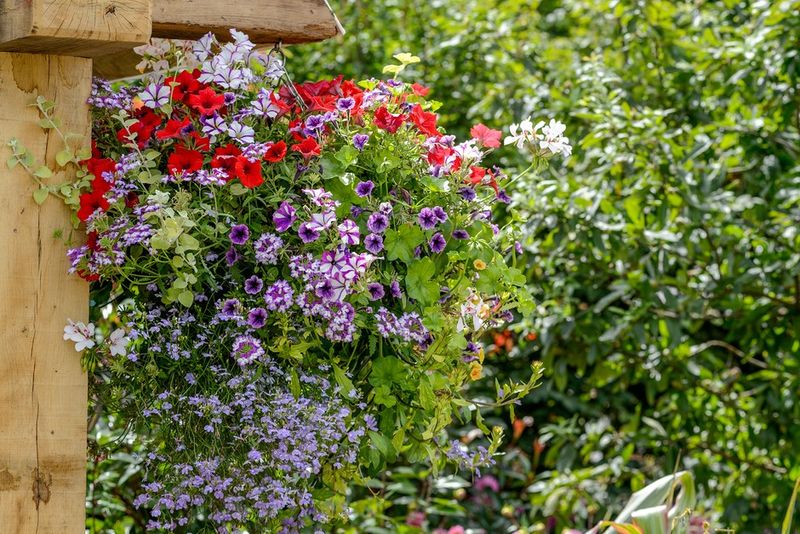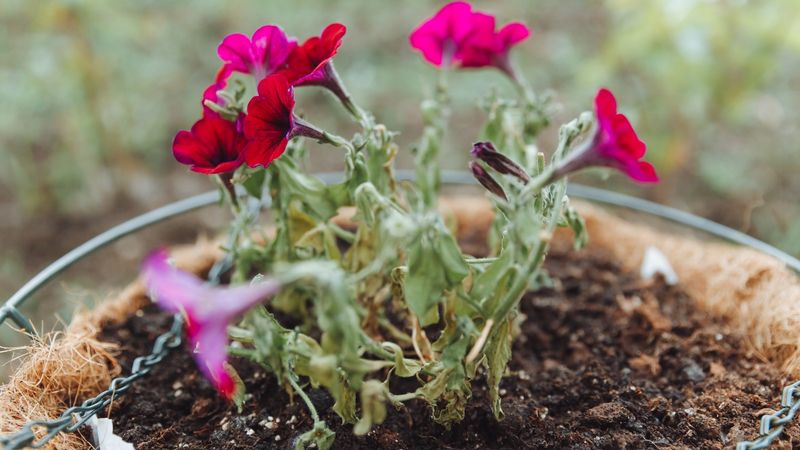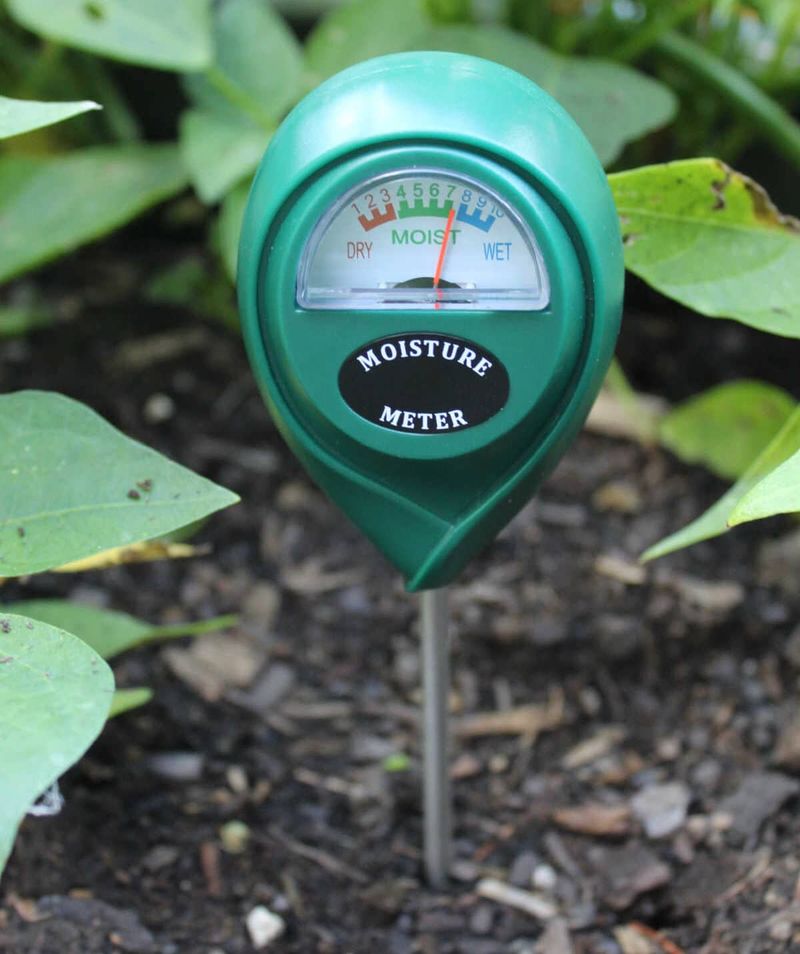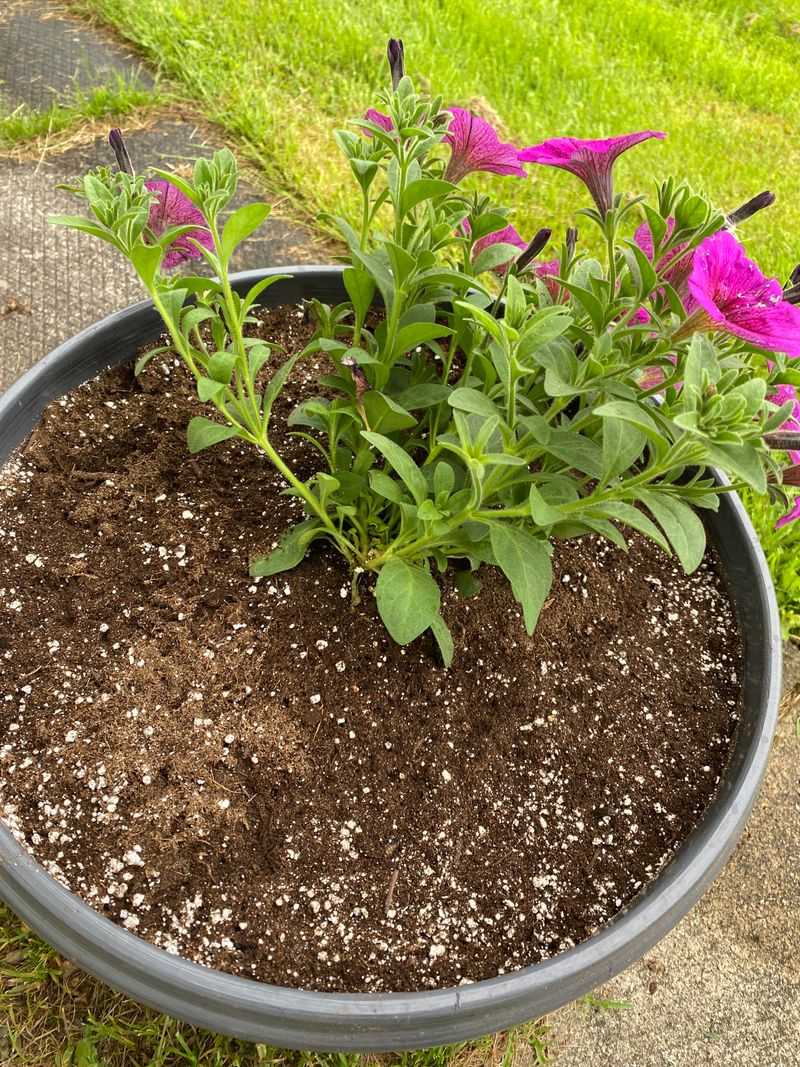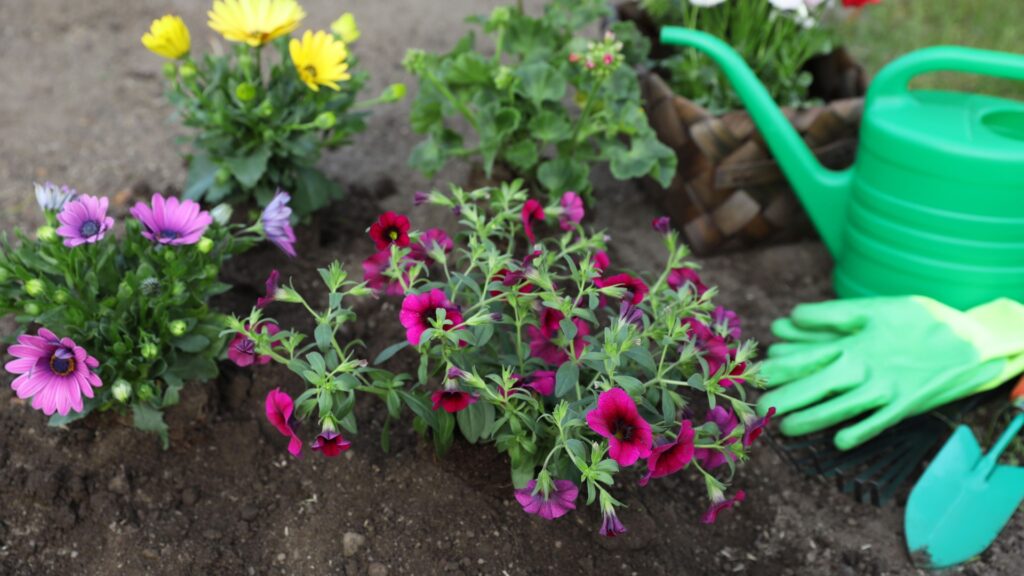Petunias paint gardens with a riot of color, but these thirsty beauties can go from showstoppers to sad sights in the blink of an eye if watering goes wrong. Even the most well-meaning gardeners can end up loving them to death with too much—or too little—water.
Striking the right balance is the secret sauce that separates a garden full of droopy, disease-ridden duds from a dazzling display that turns heads and blooms its heart out all season long.
1. Watering From Above
Spraying water directly onto petunia blooms is a common mistake that leads to petal damage and disease. Water droplets act like tiny magnifying glasses in sunlight, potentially burning delicate flowers.
Instead, direct your watering can or hose at the base of plants. This targeted approach ensures roots receive moisture while keeping vulnerable blooms dry. Morning watering allows any accidental splashes to evaporate before the hot afternoon sun.
For container petunias, consider installing a drip irrigation system that delivers water precisely where needed without wetting the flowers.
2. Shallow Watering Habits
Light sprinkles may seem helpful, but they actually encourage shallow root development. Plants with shallow roots become more vulnerable to drought and temperature fluctuations.
Give your petunias a thorough soaking that reaches deep into the soil profile. This encourages roots to grow downward in search of moisture, creating stronger, more resilient plants. You’ll know you’ve watered deeply enough when moisture seeps from drainage holes in containers.
Aim for fewer, deeper waterings rather than frequent light sprinkles. Your petunias will develop robust root systems that help them thrive even during hot spells.
3. Ignoring Weather Conditions
Many gardeners stick to rigid watering schedules regardless of recent rainfall or humidity levels. During rainy periods, this approach leads to waterlogged soil and root rot problems that kill petunias.
Check soil moisture before watering by inserting your finger about an inch into the soil. If it feels damp, skip watering that day. During heat waves, you might need to water twice daily, while cooler, cloudy days require less frequent moisture.
A rain gauge helps track natural precipitation, allowing you to adjust your watering routine accordingly. Smart gardening means responding to actual conditions rather than following a strict calendar.
4. Evening Watering Sessions
Watering petunias as the sun sets creates the perfect environment for fungal diseases to develop overnight. Wet foliage combined with cool evening temperatures allows mildew and other pathogens to flourish.
Early morning watering (between 5-9 AM) gives plants time to dry completely before evening. The morning sun helps evaporate excess moisture while plants have all day to utilize the water before temperatures drop.
If you absolutely must water in the evening, use targeted irrigation methods that keep foliage dry. Your petunias will thank you by staying disease-free and continuing to produce vibrant blooms throughout the season.
5. Inconsistent Moisture Levels
Petunias hate the roller-coaster of drought followed by flooding. This stress pattern causes root damage, yellowing leaves, and blossom drop as plants struggle to adapt to wildly changing conditions.
Maintain even soil moisture by developing a consistent watering routine based on your climate and container size. For in-ground petunias, applying a 2-inch layer of mulch helps regulate soil moisture and temperature while reducing evaporation.
Self-watering containers offer another solution, providing steady moisture through capillary action. The goal is creating a stable environment where roots can develop properly without constantly adjusting to extreme wet-dry cycles.
6. Using Ice-Cold Water
Shocking petunia roots with freezing water from hoses left in the sun causes stress that stunts growth. The temperature difference between cold water and warm soil creates a plant version of thermal shock.
Let hose water run for 30 seconds before applying to plants, allowing it to reach ambient temperature. For container plants, room-temperature water is ideal. Some gardeners keep watering cans filled and sitting in the sun specifically to warm the water naturally.
Your petunias will respond better to water that’s similar to soil temperature. This small adjustment prevents unnecessary stress and allows plants to focus energy on flowering rather than recovery.
7. Forgetting Container Drainage
Beautiful decorative pots without drainage holes become death traps for petunias. Without escape routes, water pools at the bottom, suffocating roots and creating perfect conditions for deadly root rot.
Always choose containers with adequate drainage holes or drill your own. If using decorative pots without holes, place petunias in plastic nursery pots inside them, removing the inner pot for watering and allowing excess water to drain completely before returning.
Adding a layer of gravel at the bottom doesn’t substitute for proper drainage holes – this gardening myth actually makes drainage worse! Proper drainage prevents the soggy conditions that quickly kill even the healthiest petunias.
8. Overwatering During Establishment
Drowning new petunia transplants with excessive water actually slows their growth. Contrary to popular belief, more water doesn’t mean faster establishment or better blooms.
Newly planted petunias need moderate moisture to develop strong roots. Water thoroughly at planting time, then wait until the top inch of soil feels dry before watering again. This approach encourages roots to expand in search of water rather than remaining in a saturated surface layer.
Gradually extend the time between waterings as plants establish over the first two weeks. This training period helps petunias develop drought tolerance while preventing the root rot issues that plague overwatered new transplants.
9. Neglecting Water Quality
Municipal water containing high chlorine levels can harm sensitive petunias over time. The chemical additives that make water safe for humans can accumulate in soil, affecting plant health and bloom production.
Fill watering cans 24 hours before use, allowing chlorine to dissipate naturally. Rainwater collection provides an excellent chlorine-free alternative that petunias love. Many serious growers install simple rain barrels specifically for watering sensitive ornamentals.
If you notice white mineral deposits forming on soil or containers, your water may be hard. Adding a tablespoon of white vinegar per gallon of water occasionally helps neutralize alkalinity from hard water, keeping your petunias healthy and vibrant.
10. Midday Watering Mistakes
Watering petunias during peak afternoon heat wastes water and can harm plants. Up to 30% of water evaporates before reaching roots when applied during hot, sunny periods.
Beyond inefficiency, water droplets on leaves act like tiny magnifying glasses in strong sunlight, potentially causing leaf scorch. The combination of wet foliage and intense heat creates stress that diverts energy away from flower production.
Early morning watering allows plants to absorb moisture before temperatures rise, while ensuring foliage dries quickly. If plants show severe wilting midday, provide shade rather than water, then water properly once temperatures moderate later.
11. Watering Without Testing
Blindly following watering schedules without checking actual soil conditions leads to problems. Every garden has microclimates where some areas dry faster than others due to sun exposure, wind patterns, or soil composition.
Develop the habit of testing soil moisture before watering by inserting your finger about an inch deep. If soil feels cool and damp, skip watering regardless of schedule. For container petunias, lift pots to gauge weight – lightweight pots indicate dry soil needing water.
Moisture meters provide more precise readings for gardeners who prefer tools over the finger test. This simple check prevents both overwatering and underwatering by responding to actual conditions rather than calendar dates.
12. Using Spray Nozzles
Standard spray attachments deliver water too forcefully for delicate petunias. The high-pressure spray can damage tender stems, knock off blooms, and compact soil, creating drainage problems over time.
Replace standard nozzles with gentle rain wands or watering cans fitted with roses (the perforated sprinkler attachments, not flowers). These tools deliver gentle, shower-like moisture that mimics natural rainfall without damaging plants or soil structure.
For large petunia displays, soaker hoses or drip irrigation provide the gentlest approach, delivering water directly to roots with zero impact on delicate flowers. Your petunias will produce more blooms when not constantly recovering from watering damage.
13. Forgetting Container Differences
Terra cotta pots dry out much faster than plastic containers, yet many gardeners water all containers on the same schedule. This oversight leads to chronically underwatered petunias in porous containers while potentially overwatering those in plastic.
Adjust watering frequency based on container material and size. Unglazed ceramic and terra cotta pots may need water twice as often as plastic or glazed containers of the same size. Smaller pots always dry out faster than larger ones regardless of material.
Group containers by water needs rather than appearance to simplify maintenance. This practical arrangement ensures each petunia receives appropriate moisture without creating extra work checking individual pots daily.
14. Ignoring Seasonal Changes
Spring petunias need different watering than summer or fall plants, yet many gardeners maintain the same routine year-round. Newly planted spring petunias have smaller root systems requiring more frequent but lighter watering.
As summer heat intensifies, established plants need deeper, more thorough watering to compensate for increased evaporation. By late summer, petunias develop extensive root systems that require less frequent but deeper soaking to maintain bloom production.
Fall brings cooler temperatures and slower evaporation rates, necessitating reduced watering frequency. Adjust your approach as seasons change, responding to both plant development and environmental conditions for continuous blooming from spring through frost.
15. Forgetting Humidity Factors
Humid climates dramatically reduce petunias’ water needs compared to arid regions. Many transplanted gardeners apply techniques from previous locations without adjusting for local humidity levels, causing root rot in damp regions or dehydration in dry areas.
In high-humidity environments like Florida or the Pacific Northwest, reduce watering frequency even during warm periods. Conversely, in dry climates like Arizona or New Mexico, petunias may need twice-daily watering during summer heat.
Local extension offices offer region-specific watering guidelines tailored to your climate. Long-time neighborhood gardeners also provide valuable insights on local conditions that affect water requirements for successful petunia displays in your specific area.
16. Skipping Post-Rain Checks
Brief summer showers often wet only the surface soil without reaching roots, fooling gardeners into skipping needed watering. That quarter-inch rainfall barely penetrates the soil profile where thirsty petunia roots reside.
After rainfall, check actual soil moisture by digging down 2-3 inches with a trowel. If soil appears dry below the surface, proceed with regular watering despite the recent rain. Many petunias suffer from dehydration during summer because gardeners overestimate rainfall effectiveness.
Rain gauges provide objective measurements of precipitation amounts. Generally, petunias need supplemental watering if rainfall measures less than one inch, especially during hot periods when evaporation happens quickly.
17. Forgetting Fertilizer Connections
Heavy fertilizer applications increase petunias’ water requirements dramatically. The salts in fertilizers draw moisture from roots if not properly diluted through adequate watering, causing fertilizer burn that appears as brown leaf edges.
Always water thoroughly after applying fertilizer, especially quick-release types. For container petunias, water until liquid runs freely from drainage holes to ensure salts don’t accumulate in the soil. During hot weather, reduce fertilizer strength by half to prevent stress on plants.
Slow-release fertilizers provide a safer option for gardeners concerned about proper dilution. These products release nutrients gradually with each watering, reducing the risk of harmful salt buildup while maintaining steady nutrition for continuous blooming.
18. Watering Only the Center of the Plant
Aiming your watering can solely at the base of the central stem leaves the outer root zone dry and undernourished. Petunias, like many annuals, develop a wide root system that extends well beyond the main stem. Ignoring the full root spread leads to uneven hydration and poor nutrient uptake.
When watering, gently saturate the entire root area — not just the center — especially for mature petunias with expansive growth. For hanging baskets and larger containers, rotate the pot as you water to ensure even distribution around the perimeter.
Consistently hydrating the full root zone promotes balanced growth and fuller flowering. Your petunias will reward you with a uniform, lush display that lasts all season long.

